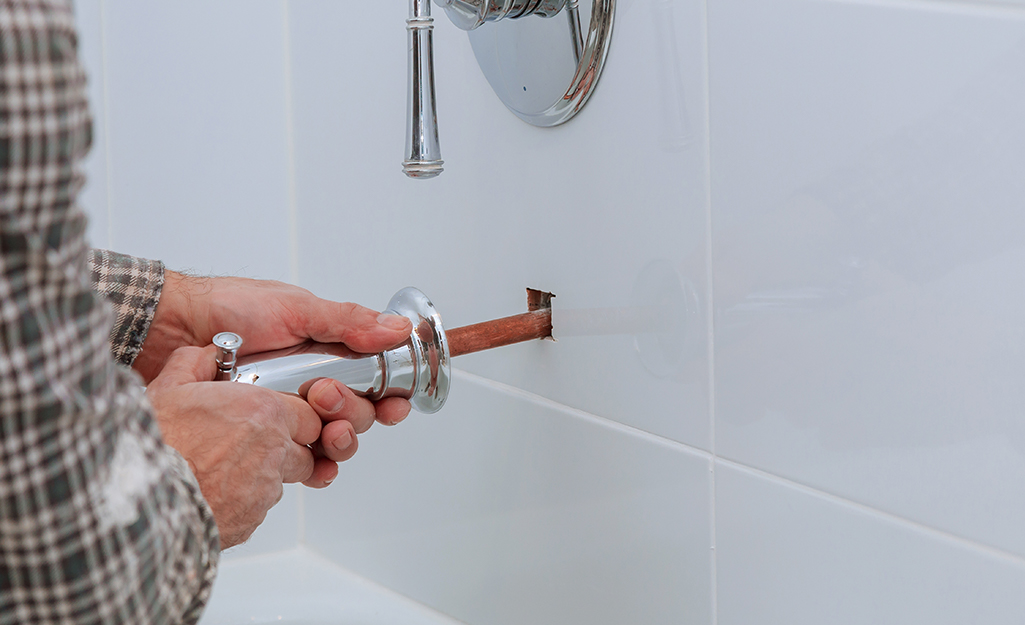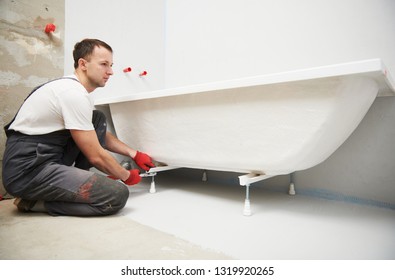How to Replace a Bath Tub in Your Bathroom
How to Replace a Bath Tub in Your Bathroom
Blog Article
How do you feel on the subject of A Step-by-Step Guide to Installing a Bathtub?

Installing a bathtub isn't exactly brain surgery, however it does require strong plumbing, carpentry, and sometimes, tiling abilities. Replacing an old tub with a new one is additionally a reasonably tough project. If the old bathtub is readily easily accessible, the project can relocate quickly; if you need to open up a wall to eliminate the old bathtub and also position the new bath tub, the job is much harder. In either situation, the task is within a home handyman's skills, although you will need a helper to leave the old tub and set in the new one. Make sure you have certified on your own for the work and also fit trying it. Rather than hiring a professional to take over a halfway-completed job, it is much better to take into consideration utilizing one prior to you start. Possibilities are you might require a specialist plumber to make tube links.
This post will certainly assist you set up a brand-new tub in your shower room if you have already purchased a new tub and don't need to change the setup of your previous water pipelines.
Your devices as well as material checklist ought to comprise the following:
Removing Old Touches
If you need to replace old taps with brand-new ones as a part of your installment, after that the first thing you must do is detach the water supply. After doing so, turn on the faucets to drain pipes any type of water staying in the system. The process of getting rid of the existing faucets can be rather troublesome due to the limited accessibility that is commonly the situation.
Make use of a container wrench (crowsfoot spanner) or a tap device to undo the nut that attaches the supply pipelines to the taps. Have a towel ready for the continuing to be water that will certainly come from the pipelines. Once the supply pipes have actually been eliminated, use the exact same tool to loosen up the nut that holds the taps onto the bath/basin. You will certainly need to quit the single faucets from turning during this procedure. When the faucets have been gotten rid of, the holes in the bath/basin will need to be cleaned up of any old sealing substance.
Before moving on to fit the brand-new taps, contrast the pipeline connections on the old faucets to the new faucets. If the old taps are longer than the brand-new faucets, then a shank adapter is needed for the new faucets to fit.
Suitable New Taps
If the tails of the new faucets are plastic, then you will require a plastic connector to stop damage to the thread. One end of the adapter fits on the plastic tail of the tap as well as the other end offers a link to the existent supply pipes.
If you require to fit a monobloc, after that you will call for lowering couplers, which links the 10mm pipeline of the monobloc to the basic 15mm supply pipeline.
Next, position the faucet in the installing opening in the bath/basin guaranteeing that the washing machines are in location in between the tap and also the sink. Secure the faucet in place with the maker provided backnut. When the faucet is securely in position, the supply pipelines can be linked to the tails of the faucets. The taps can either be linked by utilizing corrugated copper piping or with normal tap adapters. The former type needs to be connected to the faucet finishes initially, tightening only by hand. The supply pipelines can later on be connected to the various other end. Tighten up both ends with a spanner after both ends have been linked.
Mounting the Bathtub
Utilizing both wood boards under its feet, place the tub in the needed placement. The wooden boards are valuable in equally spreading the weight of the bathtub over the location of the boards as opposed to concentrating all the weight onto four little factors.
The following objective is to ensure that the tub is leveled all round. This can be attained by checking the spirit level and also adjusting the feet on the tub till the spirit level checks out degree.
To mount taps, fit the bottom of the outermost flexible tap port to the ideal supply pipe by making a compression join; after that do the very same for the other tap.
Turn on the water and inspect all joints as well as brand-new pipework for leaks and tighten them if needed. Load the bath tub and likewise inspect the overflow electrical outlet and also the normal outlet for leakages.
Finally, repair the bathroom paneling as defined in the supplier's user's manual. Tiling and sealing around the bathtub ought to wait up until the bath tub has actually been made use of at least when as this will certainly resolve it into its final position.
Getting ready for the Setup
First of all, the sustaining structure provided with the bathroom needs to be fitted (if called for) according to the manufacturer's instructions. Next, fit the taps or mixer to the bathtub. When fitting the tap block, it is essential to ensure that if the tap comes with a plastic washer, it is fitted between the bath and the taps. On a plastic bath, it is also reasonable to fit a sustaining plate under the faucets system to avoid stress on the tub.
Fit the versatile tap connectors to the bottom of the two taps using 2 nuts and also olives (occasionally provided with the bathtub). Fit the plug-hole outlet by smearing mastic filler round the sink outlet hole, and then pass the electrical outlet via the hole in the bathroom. Utilize the nut supplied by the manufacturer to fit the plug-hole. Examine the plug-hole electrical outlet for an inlet on the side for the overflow pipeline.
Next off, fit the end of the flexible overflow pipe to the overflow electrical outlet. After that, screw the pipe to the overflow face which need to be fitted inside the bathroom. Make certain you utilize all of the provided washing machines.
Link the catch to the bottom of the waste electrical outlet on the tub by winding the thread of the waste electrical outlet with silicone mastic or PTFE tape, and also screw on the trap to the outlet. Attach all-time low of the overflow tube in a similar manner.The bath need to currently be ready to be fitted in its last setting.
Tiling Around the Bathtub
In the location where the bathroom satisfies the tile, it is essential to secure the joins with a silicone rubber caulking. This is important as the installation can move sufficient to split a rigid seal, creating the water to permeate the wall in between the bath and the tiling, bring about problems with dampness as well as feasible leaks to the ceiling listed below.
You can choose from a selection of coloured sealers to assimilate your components as well as fittings. They are sold in tubes as well as cartridges, and can securing spaces as much as a width of 3mm (1/8 inch). If you have a larger space to load, you can load it with twists of soaked newspaper or soft rope. Remember to constantly fill the tub with water prior to sealing, to allow for the motion experienced when the tub is in usage. The sealer can fracture relatively early if you do not take into consideration this motion before securing.
Conversely, ceramic coving or quadrant ceramic tiles can be utilized to edge the bath or shower tray. Plastic strips of coving, which are easy to use and also reduce to dimension, are likewise easily available on the marketplace. It is suggested to fit the ceramic tiles using water-resistant or water-proof sticky as well as grout.
Bathtub Installation
How Important Is A Bathtub To Your Home?
High-quality baths, showers, and other bathroom updates are necessary when considering a smart investment in your home. It’s a room that you go to every day and one that is constantly being used by guests.The bathroom is one of the top trafficked rooms in a home and also one of the most valuable in terms of home resale.
Install Piping Before Tub
You will be using your existing drain and waste vent system, but pipes required include the hot and cold water supply lines and a pipe leading to a shower head. A mixing valve and shower head are also needed. Air chambers may be required.
Position the Tub
Lower the tub into place so that the continuous flange fits against the wall studs and rests on 1’x4' or 2’x4' supports. Anchor the tub to the enclosure with nails or screws inserted through the flanges into the studs.
NOTE: Remember, bathtubs and shower stalls may require support framing. A bathtub filled with water is extremely heavy, so check building codes and framing support before installing the tub.
Assemble Drain Connections
Assemble the bathtub drain connections by connecting the tub overflow with the tub drain above the trap, not beyond it. The trap will have a compression fitting that screws over the arm of the overflow assembly.
Place a Pipe For the Shower Head
First, locate a brass female threaded winged fitting and attach it to a framing support via a screw or a nail. Then run a pipe up the wall for the shower head. Sweat or solder the other side of the brass fitting to the top of the pipe.
Attaching Hot and Cold Water Lines
Attach your water lines for both hot and cold by sweating these directly into the hot and cold ports of the mixing valve. The mixing valve will be how water enters the tub’s system, not by the pipes themselves.
Install the Spout
Extend a piece of 1/2 inch pipe, or whichever length is specified in the manufacturer’s instructions, for the tub spout. Sweat on a male threaded fitting at the end of the pipe or use a brass nipple of the proper length and a 1/2 inch cap.
NOTE: At this point you should have your rough-in plumbing work inspected before proceeding further.
Check For Leaks
Restore the water pressure and check the drain connection and the supply pipes for any sign of leaking.
estore the Bathroom Wall
Replace the wall with moisture-resistant drywall as a base for your wall covering. Seal the joints between the wall and your new tub with silicone caulk as protection against water seepage.
https://www.berkeys.com/2016/12/02/bathtub-installation-dallas/

Do you enjoy more info about Tools You Need to Install a New Bathtub ? Write a short review down the page. We will be glad to know your ideas about this blog posting. We hope that you visit us again soon. Sharing is nice. Who knows, you may be helping someone out. Thanks for your time. Come back soon.
View Report this page